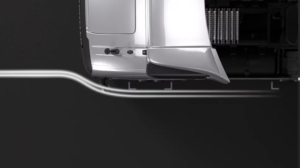Aerodynamic engineering Volvo uses to increase fuel efficiency
- January 23, 2023
- Blog
- Posted by Derick
- Leave your thoughts
Simply put Volvo knows that to succeed they need to put their customers interests first and foremost.
They do this in countless ways, but one of the ways is through their relentless drive to improve their vehicles fuel efficiency with the goal of leaving more money in the pocket of the driver. But increasing fuel efficiency is no simple task. This has caused Volvo to take a unique approach to this challenge by which they take into account both powertrain as well as aerodynamics in their efforts to improve efficiency. The results that have come from their efforts are nothing short of outstanding, as Volvo now offers different packages that can improve fuel efficiency anywhere from 12 to 16%!
If you stop and think for a moment a 12 to 16% improvement in fuel efficiency should make any trucker who has ever paid a dime for diesel take immediate notice! By any analysis the long term (heck even the short term) fuel savings of this improvement are astronomical!
Let’s start with the aerodynamics.
Improving the aerodynamics is all about working with the air flow. And by this we mean cutting through it with the least amount of resistance. The problem as we all know is that rigs are massive vehicles and it takes no small amount of technology, testing and know-how to actually make a rig less wind resistant. Thankfully, as mentioned, this is a priority for Volvo. To reduce the wind efficiency of Volvo rigs required optimizing the shape of the trucks body. So Volvo started at the front bumper and combined road clearance with smooth air flow both below as well as around the truck. This flows along the sturdy chassis fairing and road effect skirting to the back wheels.
Upper airflow is guided with mirror deflectors reducing drag and glass soiling. The critical “cab to trailer gap” is tightened using bunk extenders and roof line trim tab to improve airflow on every surface.
Volvo Trucks also offers active aerodynamic technologies, such as grille shutters and front air deflectors, which can be automatically adjusted to optimize the truck’s aerodynamics in different driving conditions. From there Volvo offers options for wheel covers and deflectors between the drive axles giving smooth surfaces to exit the flow to the trailer.
When done, you need to test… and that is done in wind tunnels: Volvo Trucks uses wind tunnel testing to measure the aerodynamic performance of its rigs and identify and then find areas where improvements can be made. This is the final step that allows the company to fine-tune the design of its trucks to maximize their aerodynamic efficiency.
In our next post we’ll discuss how the powertrain component plays into this.


